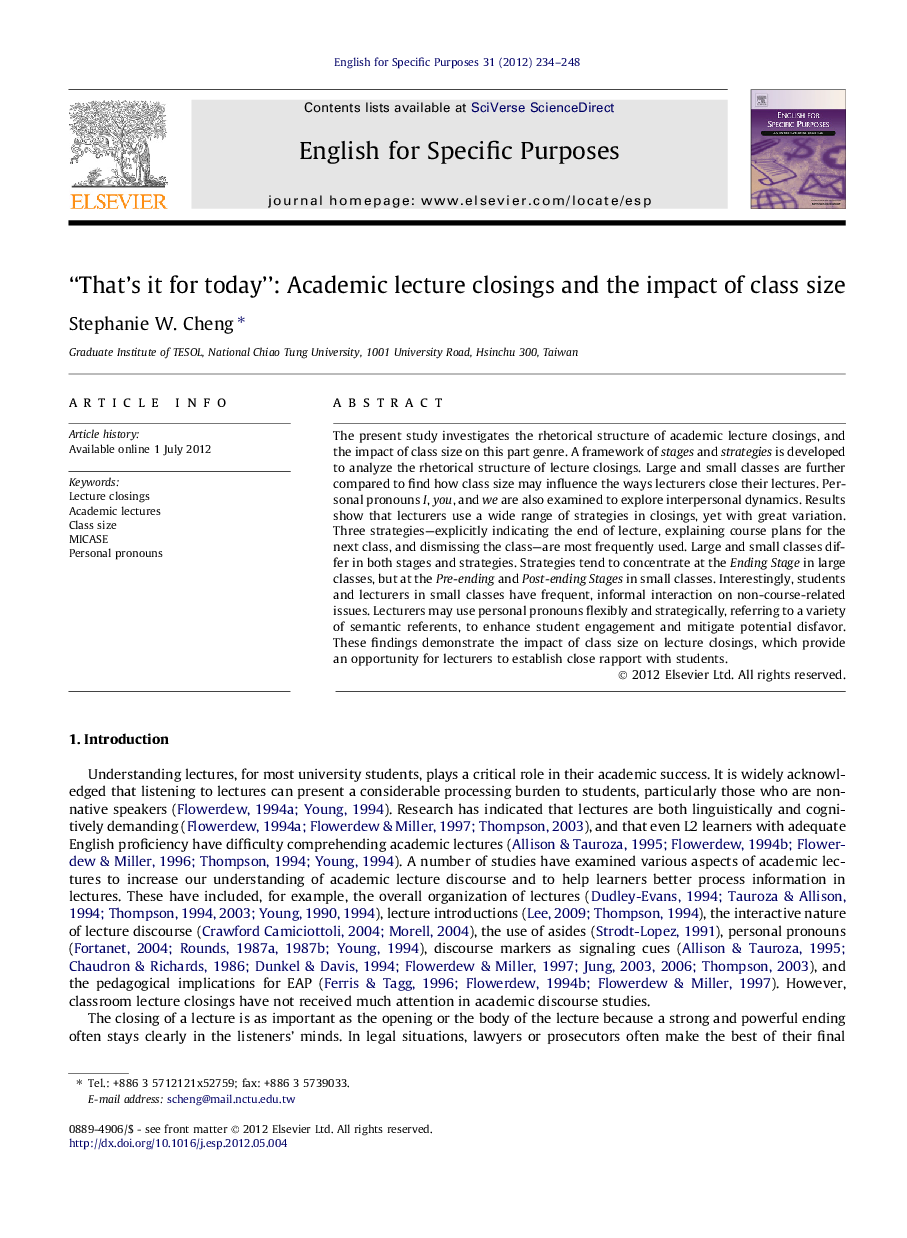| Article ID | Journal | Published Year | Pages | File Type |
|---|---|---|---|---|
| 355602 | English for Specific Purposes | 2012 | 15 Pages |
The present study investigates the rhetorical structure of academic lecture closings, and the impact of class size on this part genre. A framework of stages and strategies is developed to analyze the rhetorical structure of lecture closings. Large and small classes are further compared to find how class size may influence the ways lecturers close their lectures. Personal pronouns I, you, and we are also examined to explore interpersonal dynamics. Results show that lecturers use a wide range of strategies in closings, yet with great variation. Three strategies—explicitly indicating the end of lecture, explaining course plans for the next class, and dismissing the class—are most frequently used. Large and small classes differ in both stages and strategies. Strategies tend to concentrate at the Ending Stage in large classes, but at the Pre-ending and Post-ending Stages in small classes. Interestingly, students and lecturers in small classes have frequent, informal interaction on non-course-related issues. Lecturers may use personal pronouns flexibly and strategically, referring to a variety of semantic referents, to enhance student engagement and mitigate potential disfavor. These findings demonstrate the impact of class size on lecture closings, which provide an opportunity for lecturers to establish close rapport with students.
► Class size has an impact on the rhetorical structure of lecture closings. ► Lecturers use a wide variety of strategies yet with great variation. ► Strategies concentrate at Ending Stage in large classes. ► Strategies concentrate at Pre-ending and Post-ending Stages in small classes. ► Personal pronouns are used to enhance engagement and mitigate potential disfavor.
